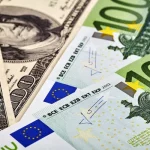Key Notes
Early Friday morning in Europe, the U.S. dollar declined, giving up some of the improvements achieved the previous day as investors tried to predict the Federal Reserve’s probable course of tighter in 2019.
The Dollar Index, which compares the value of the dollar to a basket of six other currencies, decreased 0.2% at 103.877 on 02:55 ET (07:55 GMT).
Statistics indicating that the U.S. job market is still competitive and that the economy recovered quicker than expected in the 3rd quarter after declining in the initial half of the year helped the dollar make significant gains on Thursday.
According to these figures, the Federal Reserve will need to continue aggressively restricting monetary policy for a longer amount of time than initially anticipated in order to bring inflation back under control.
Traders also noted that the statistics offered a picture of a healthy economy, but attitude has altered overnight to the harm of the dollar.
Moreover, a variety of economic data releases are slated to be released on Friday, including information on personal income and spending. These statistics will be heavily scrutinized because the most recent two consumer price index reports showed that price pressures appear to be cooling, raising hopes that inflation may have reached its apex.
The yen gave back a portion of the week’s major gains as a result of the BOJ’s move to permit the 10-year bond yield to float in a broader band, and USD/JPY increased by 0.2% to 132.52.
Consumer prices in Japan, excluding fresh food, increased 3.7% in November from a year earlier, which is the highest rate since 1981 and may indicate that the Bank of Japan will modify its policies again in January.
Other than that, EUR/USD increased by 0.3% to 1.0628 after French PPI increased by 1.2% on a monthly basis in November, far higher than the 0.2% decline observed the month before, indicating that inflation in the euro zone will be a hard to crack.
GBP/USD increased 0.2% to 1.2065, recovering somewhat after overnight falling to a 3 bottom of 1.1993; however, the riskier AUD/USD increased 0.5% reaching 0.6701.









